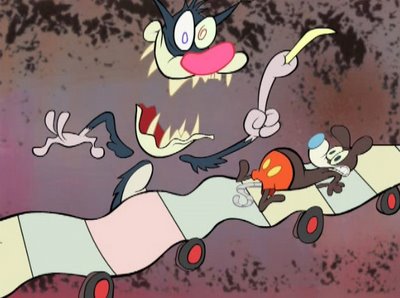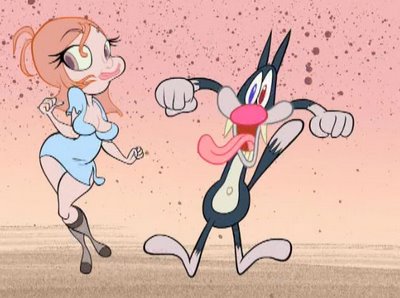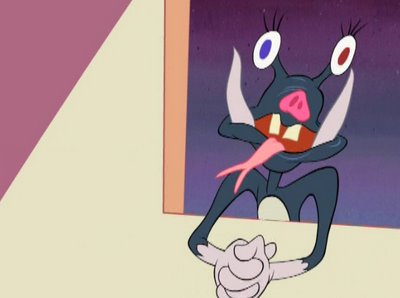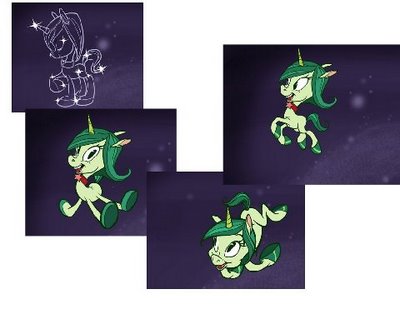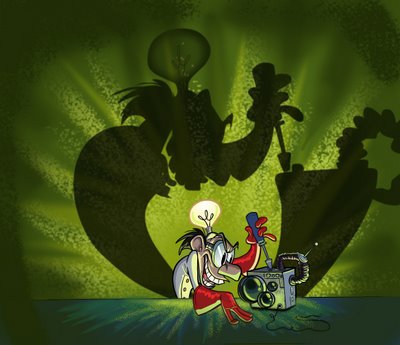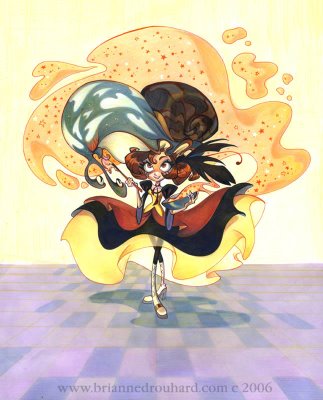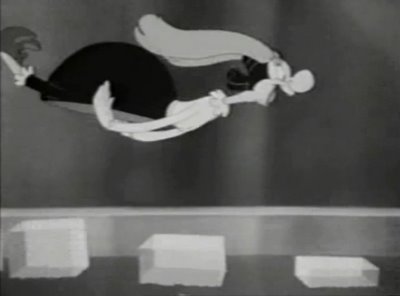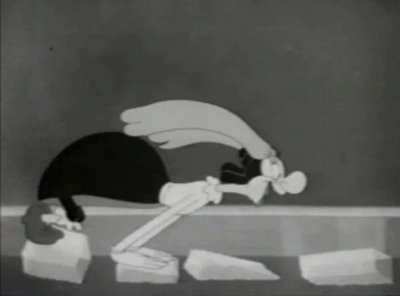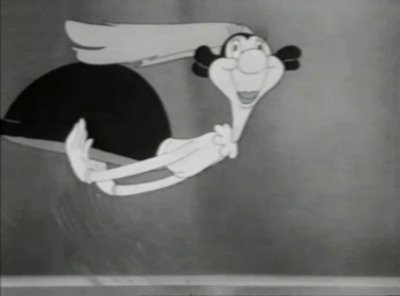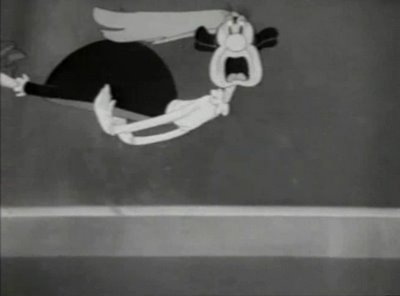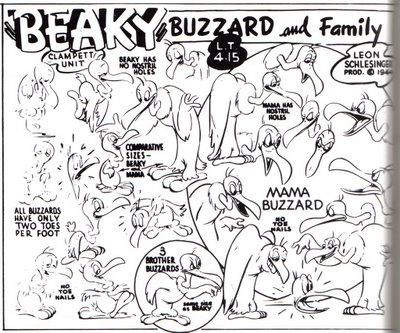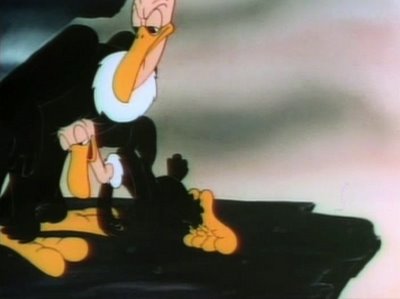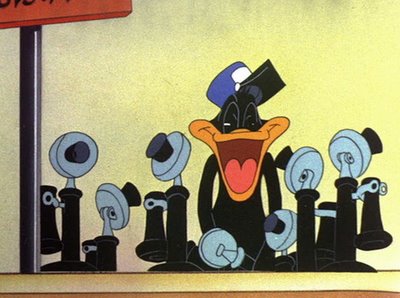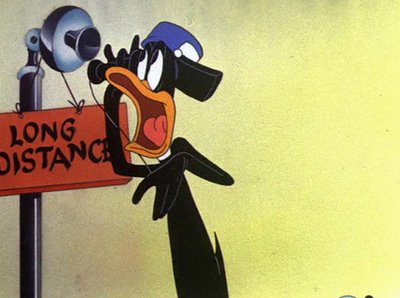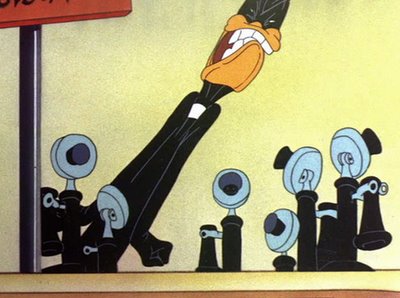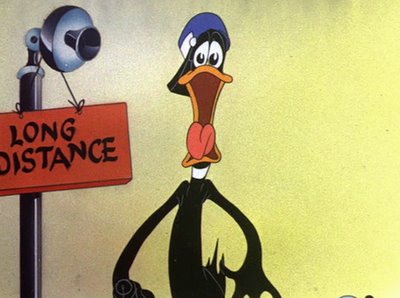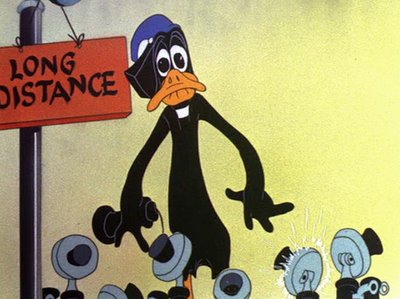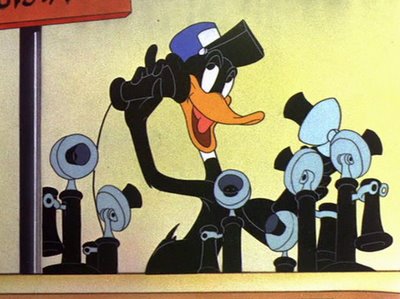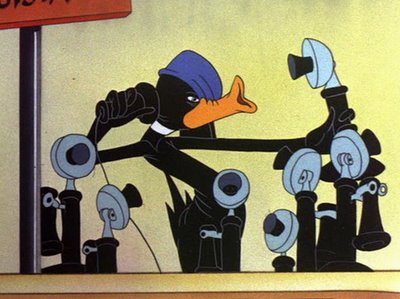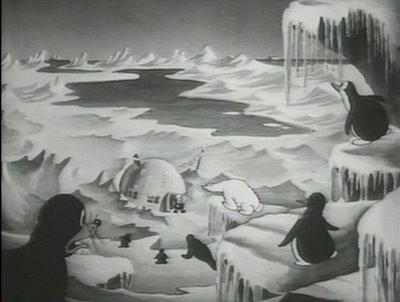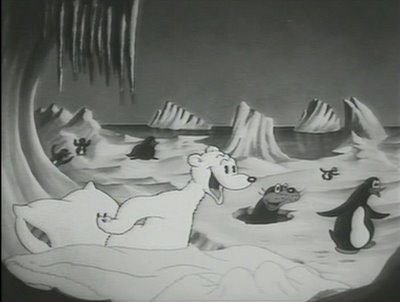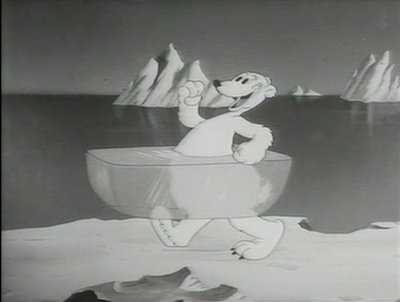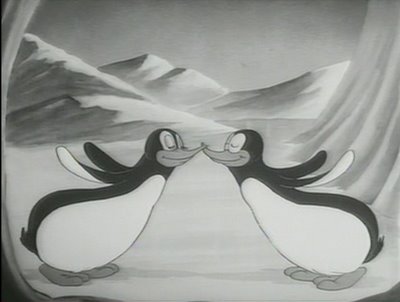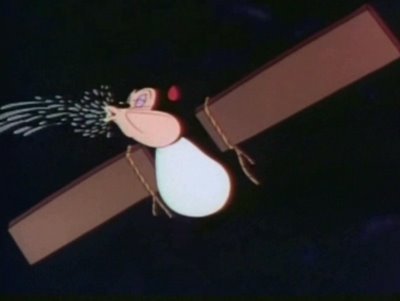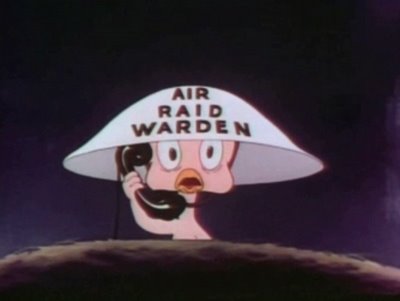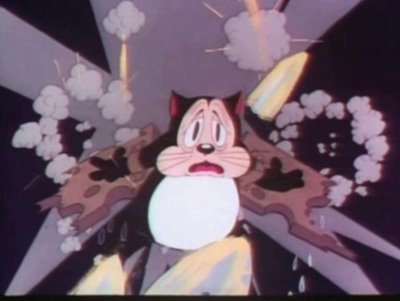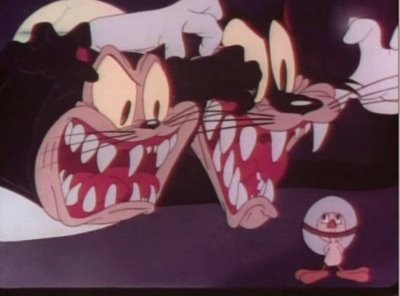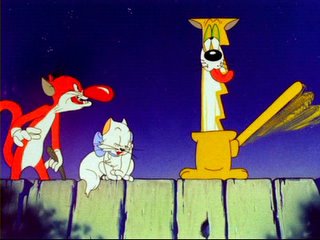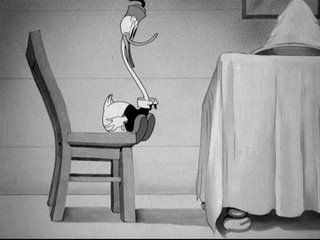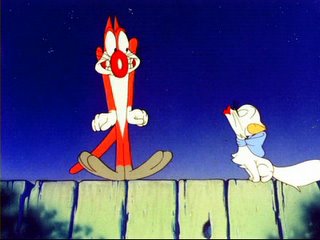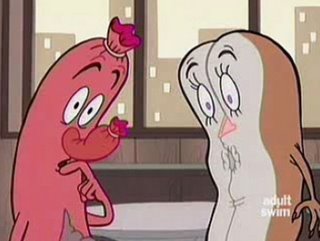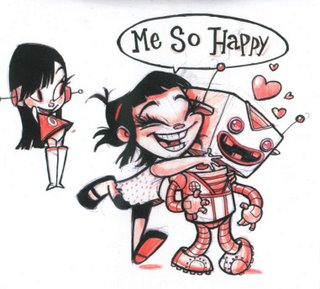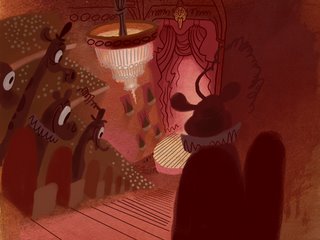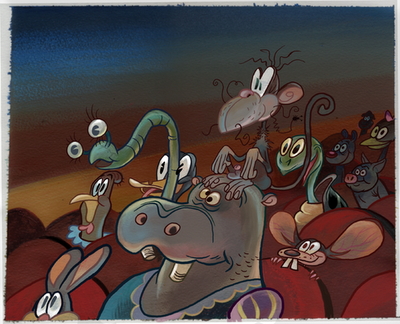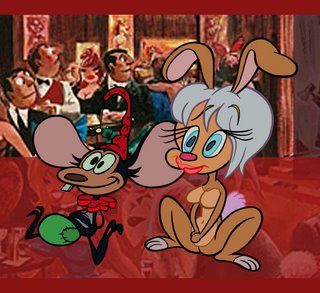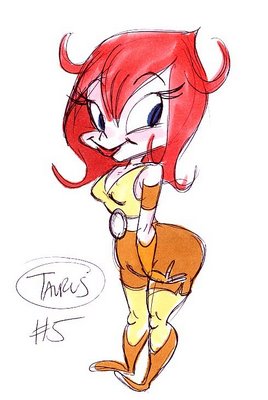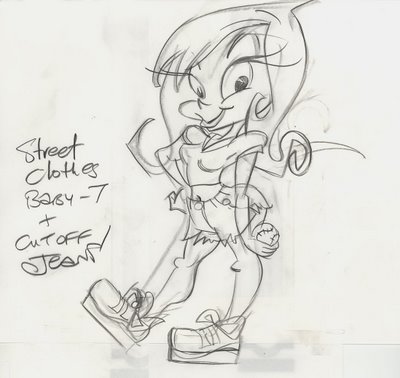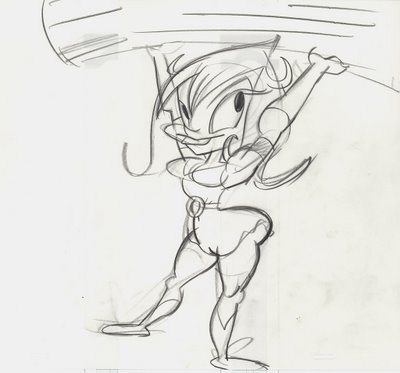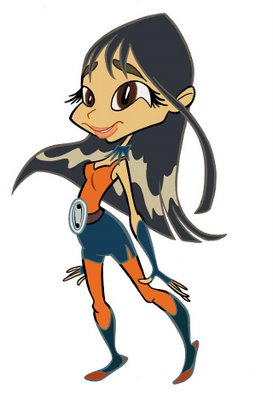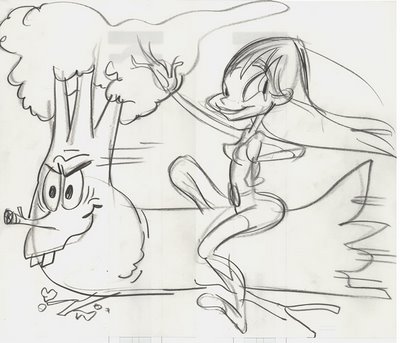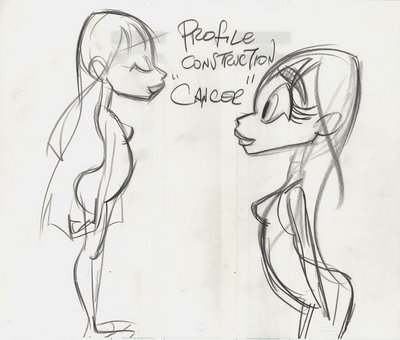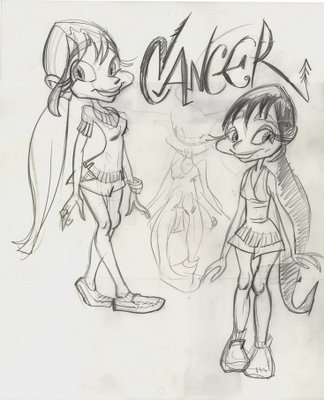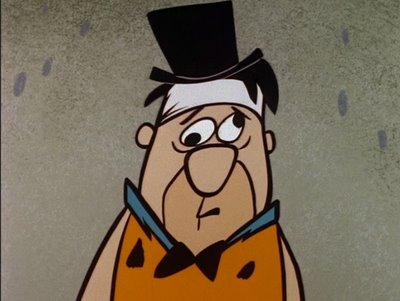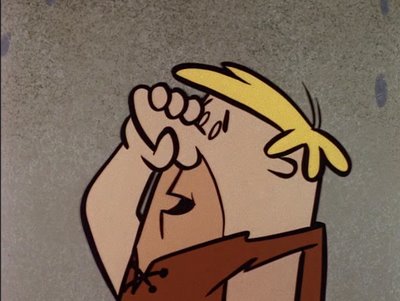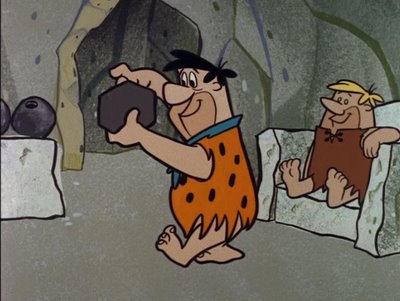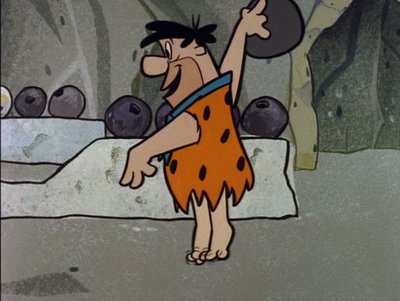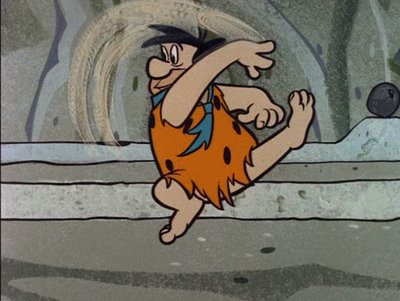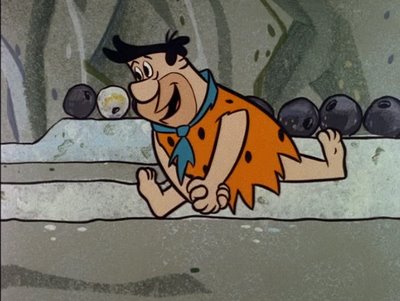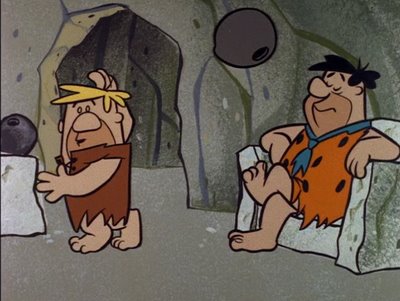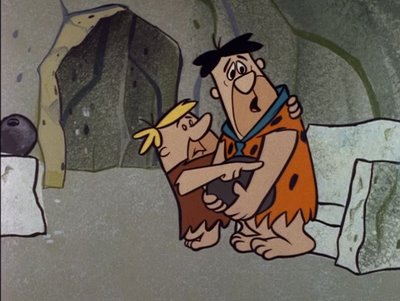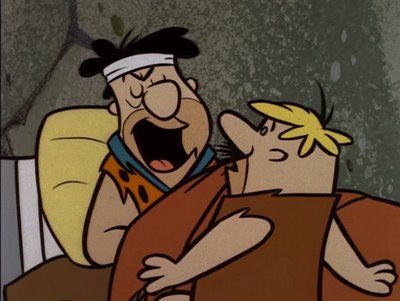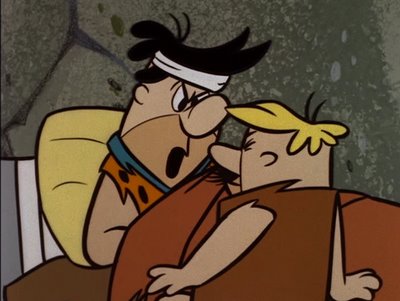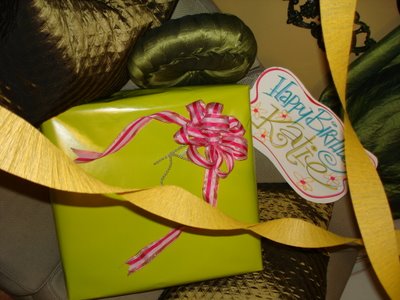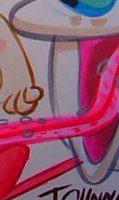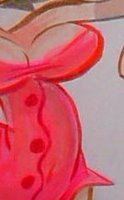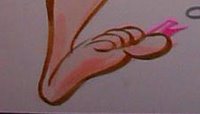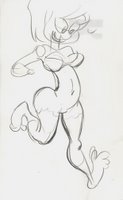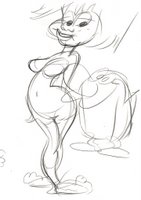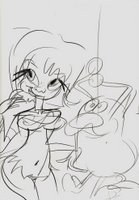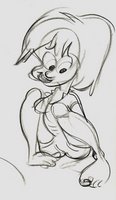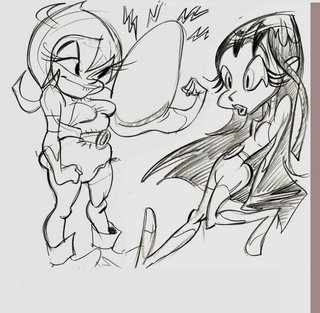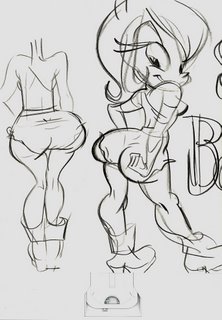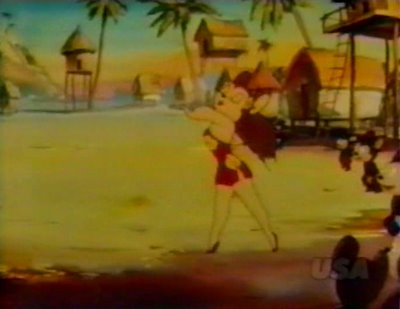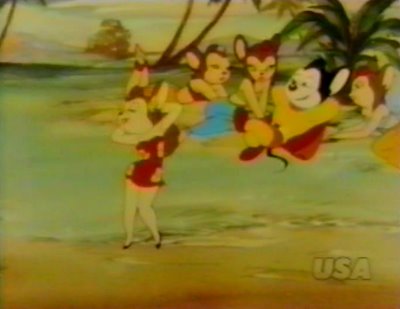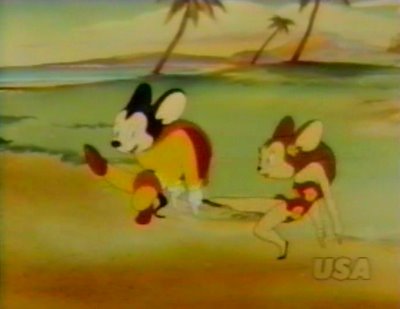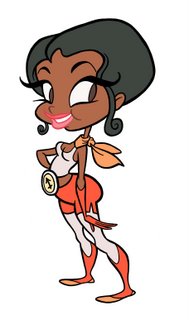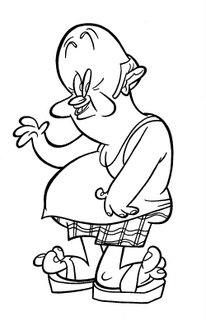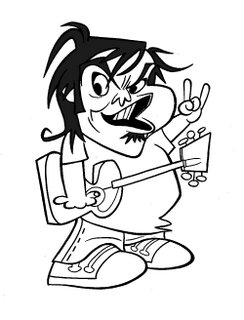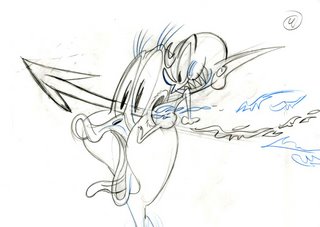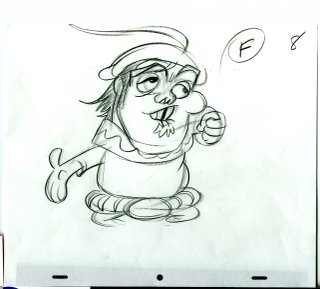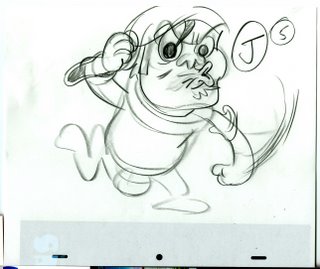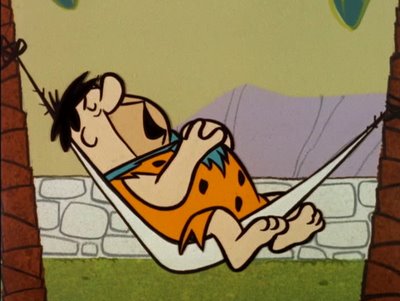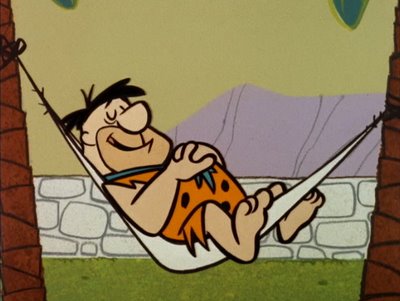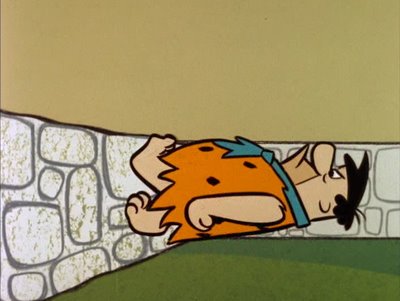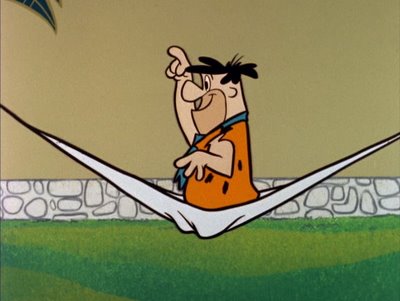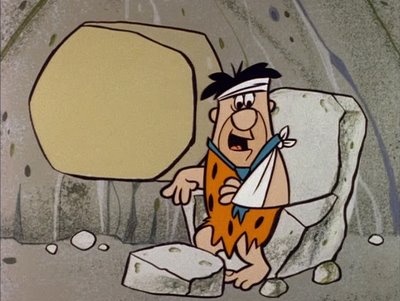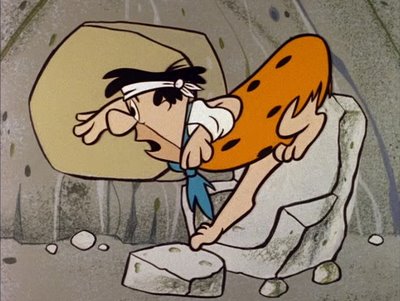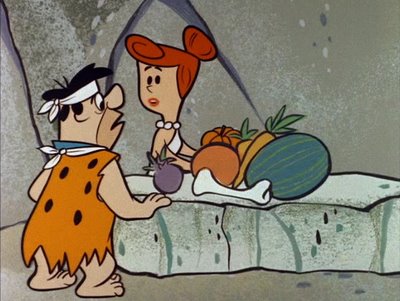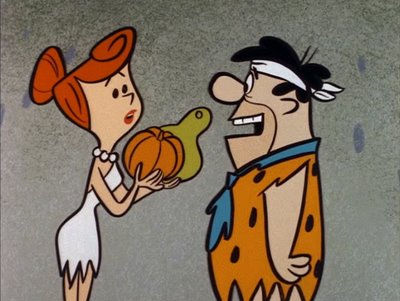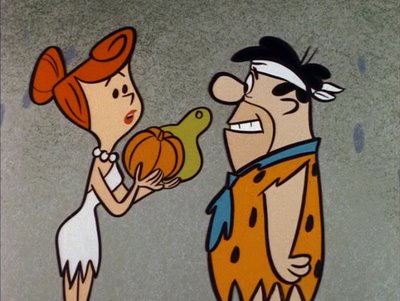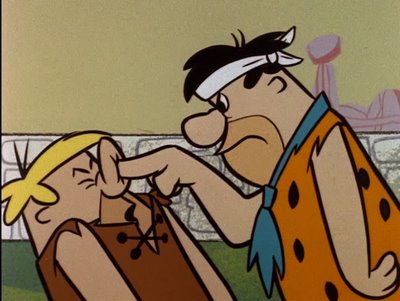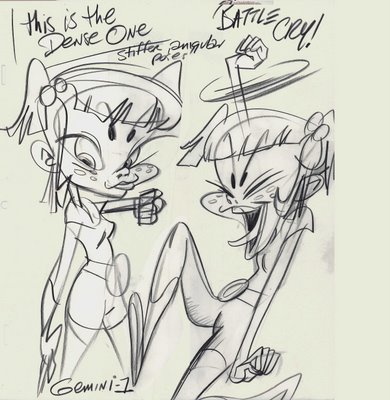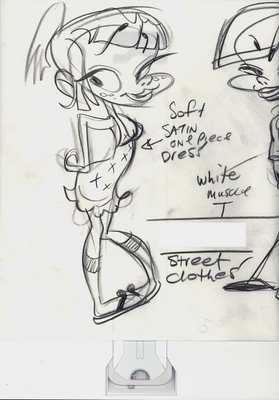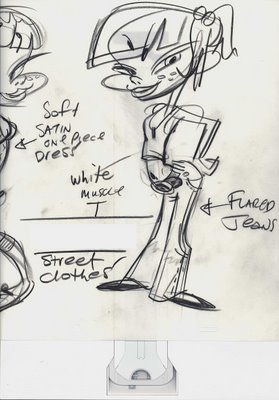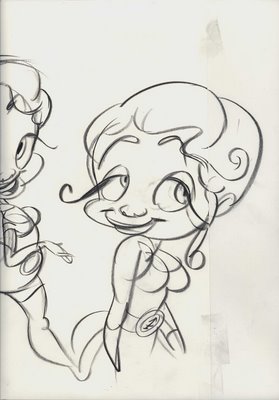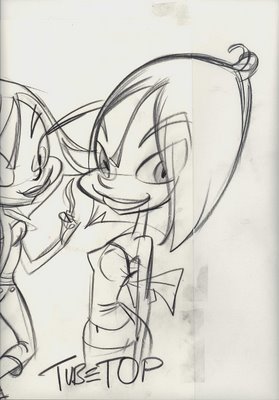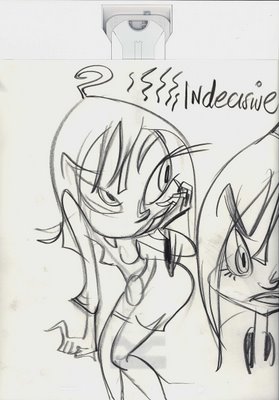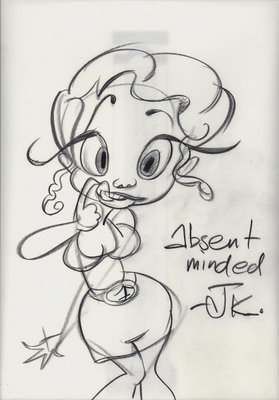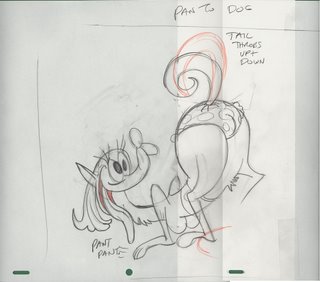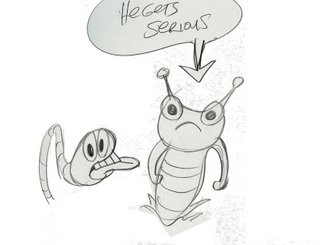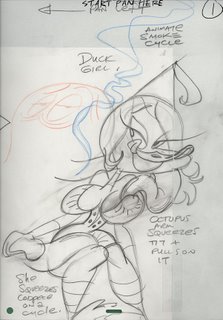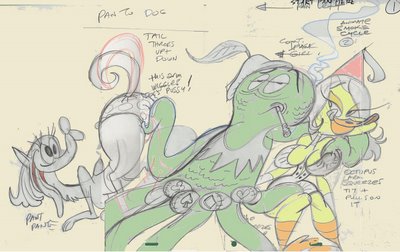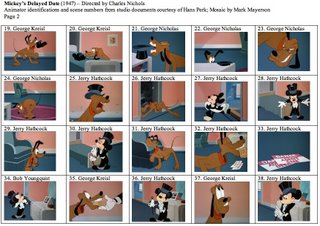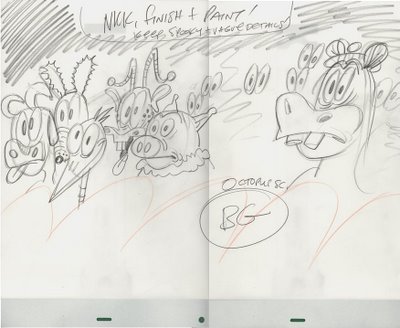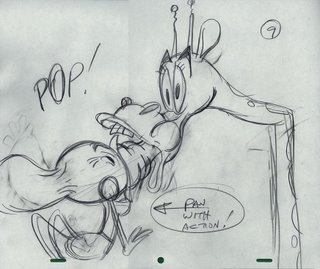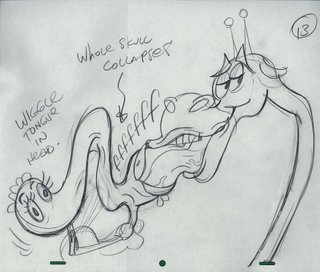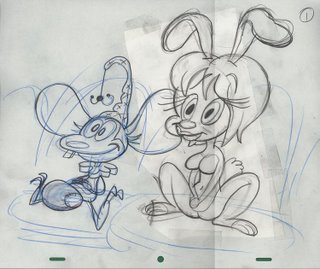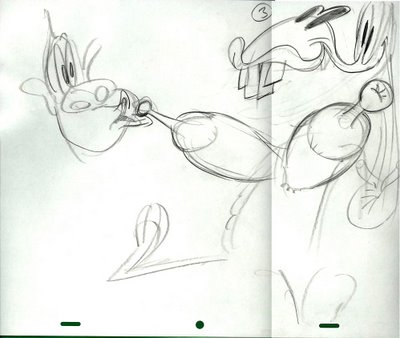Check out this article to see how to tell different Flintstone animators apart:
http://www.animationarchive.org/2006/09/biography-john-k-on-flintstones.htmlAnimation tends to be a really inbred artform. Even in the Golden Age. Most animators are influenced by a very small school of a single animation style. There are the Disney imitators, the Warners imitators, the Hanna Barbera imitators, the Anime imitators, even the Dic imitators. Now there are even Tiny Toons imitators! An imitation of an insincere imitation!
The most prevalent house styles today are the Cal Arts style (every Disney, Bluth, Pixar and most feature cartoons), or they are Spumco influenced (Cartoon Net and Nickelodeon and many of my young fans), or they are Dic influenced (Shrek and most Dreamworks stuff).
In the early days of sound cartoons most animators were influenced by comic strips and there was a huge variety of styles at the time...HUGE! There have been way more cartoon styles drawn by individual comic book and strip artists and for a few decades the rule was "anything goes". Sure each major artist had his imitators, but overall, comics was a very healthy and varied field.
All these artists had their own sets of heroes and influences, some were more cartoony, some illustrative and a ton of variations on those general themes.
Chester Gould, George Herriman, Windsor McCay, Harvey Kurtzman, Milt Gross, Sullivant, Billy DeBeck, Chic Young, Jack Kirby, Virgil Partch, and on and on. Tons of different styles and approaches.
I think that animation in its early days was heading in healthy directions with the Fleischers, Terrytoons and the New York studios all exploring unique styles and giving their animators freedom to express themselves.
Men like Grim Natwick, Carlo Vinci, Jim Tyer, Willard Bowsky, Bill Tytla all drew in completely unique styles and no one seemed to be doing anything to force them into a house style or mold. Each house style was the sum of the artists that happened to be working there. At Terrytoons, it seemed to be very random with no control at the top at all, and to me that's a good thing for some studios to be.
The Fleischers had a studio vision, Dave or someone gave its cartoons a structure and statement that most other studios at the time didn't have and that's why their cartoons are so great even now. Terrytoons are pretty much an aquired taste by really picky eclectic artists and cartoon historians.
But all the artists at that time were influenced by many other art forms, not just other animation like the situation we have today.
The concept that all cartoons have to follow one style and one form was started by Walt Disney, who in my opinion diverted the natural tendency of a young art form to develop in random and varied directions and find itself, to a stilted inbred medium that quickly went against everything the medium was naturally capable of.
Walt's greatest talent was to convince everybody else that he was right and that everyone else was wrong, even though he was the most wrong of all.
When he came to the west coast, he somehow managed to convince all the other cartoonists to make cartoons like his, bland and boring and very generic in design. All of a sudden, cartoonists who previously were making cartoony and fun pictures like the guys at Looney Tunes, started making their cartoons more and more generic. If you watch Bosko cartoons from 1930 and then watch some Looney Tunes or Merry Melodies from 1934, you can see a big decline in design, fun, cartooniness and gags.
Luckily in 1935, Tex Avery and Bob Clampett came along and brought cartoons back to their roots and followed their own unique visions, rather than being low budget inferior clones to Disney's big budget bland and sappy non-cartoons.
Well I don't want this post to be about Disney. I'm just making the point that it is extremely dangerous to limit yourself to a small body of work in one small field of art. It's Ok that some people like Disney and the original Disney artists at least had some pre Disney influences. Now the inheritors of the Disney style only have Disney as an influence but without the solid art training that held together Walt's cheesy vision. Well, lately The Disney followers today actually do have some small other influences, but usually worse ones, like Anime or Hanna Barbera 70s cartoons-like every Disney Feature that has come out since Eisner and Katzenberg took over. They preserved the worst part of Disney-the sappiness, the insincerity, the pandering to mothers and they threw out the good parts-the amazing draftsmanship and attention to intricate detail. The 2d movies that came out in the 1980s and 90s look like big-budget Ruby Spears cartoons, they are drawn as badly as Saturday morning cartoons but pretend to have Disney sensibilty by breaking into awful songs every 5 seconds and having fake pathos and wacky irritating sidekicks. About the only visual similarity the modern Cal-Arts Disney style has to real Disney are the eyes and eyebrows and a couple mouth expressions, lifted out of Frank Thomas' little strip of expressions that nobody in real life ever makes.
I get lots of portfolios from kids that copied my cartoons when they were young, and didn't copy what I copied, which is a much wider range of styles. They inevitable copy the mistakes from my TV budget cartoons-and there are tons. Cartoon Network and Nickelodeon has made whole styles out of the mistakes from my cartoons.
Unfortunately for young artists today, they are are not subjected to a wide range of great cartoon and illustrative art. They are surrounded by comic strips drawn by people with broken fingers and cartoons that are copied from recent cartoons that are copied from recent cartoons etc.
Each generation gets more sloppy and farther away from the original skills and principles that inspired the first generation of animators.
Ren and Stimpy when it came out seemed like a completely new style to most people. There isn't one single influence anyone can point to and say, well it came from
that.
A real irony, is that I sometimes hear that because I have opinions that I must be "close-minded". How did Ren and Stimpy come about if that was the case?
I couldn't have made a cartoon so different if I didn't draw on a ton of influences and styles and then mix them up in my own way. The fact that I allow artists to draw in their own styles in my cartoons is the strongest evidence of how liberal I am creatively. I'll try anything-as long as it attempts to be skillful. I don't always succeed, but I also don't have a bible somewhere dictating what expressions work in animation, what kind of story structures work, what kind of color schemes do cartoons use, etc.
I explore. In fact I feel completely guilty whenever I repeat myself. I do repeat myself sometimes, it's impossible not to, but I'm ashamed when I do. I'm always on the lookout for new discoveries, new styles, new ideas and old worn-out rules to break. It is my mission.. And to discover new talent and encourage them to find their own styles and actually put them into the cartoons-I've done that countless times and launched many careers by opening people's eyes to possibilities they would not even have thought of otherwise.
I guide them by showing them tons of different art styles-Shane Glines would be the first to admit that he discovered so much about different art styles and approaches just by working with me for a few months. His great site is a testament to that and every young artist should go to Cartoon Retro and voraciously eat up all the great art there and open your minds to a few more decades than the half of one that most artists draw from today. When Shane first showed up at Spumco a decade ago, he drew in Don Bluth's style. He did it very well and because of it, at first had a hell of a time breaking out of it. Luckily he was also a fan of comic books and was at least aware of other styles that were appealing and worth being influenced by. Like most young Cal Artsy style cartoonists, they don't even
know they have an inbred style and they argue fiercely about it! "Oh I'm influenced by Frank Thomas, and my friend is influenced by Freddy Moore and so and so is influenced by Ward Kimball! We're all so different!" They will actually argue this and can't see the obvious irony in it that cartoonists who are influenced by a lot more than Disney cartoons (and their copiers) do. Shane, by inking my art and Jim Smith's, Vincent Waller's and Mike Fontanelli's was quickly absorbing some new drawing styles. Shane, jump into the comments and tell your fans to open their minds like you did.
Now to the point! Whew!
Here are just a few of my influences:
Animated cartoons:
Grim Natwick
Willard Bowsky
Carlo Vinci
Manny Gould
Izzy Ellis
Ed Love
Milt Kahl
Jim Tyer
Rod Scribner
Tex Avery
Chuck Jones
Bobe Cannon
Ben Washam
Mike Lah
Dick Lundy
Verne Harding
Katie Rice
Bob Camp
Bob Jaques
Kelly Armstrong
Eddie Fitzgerald
Lynne Naylor
Jim Smith
Vincent Waller
Aaron Springer
Ed Benedict
Dave Feiss
Nick Cross
Helder Mendonca
Gene Hazelton
Rod Scribner
Bob McKimson
Irv Spence
Those aren't even them all. But every one of those animators is unique and has a strong individual style and I have used some of what I like about their work and incorporated it tangibly in my own cartoons. It's not enough to say "I'm influenced by so-and-so". For an influence to have a tangible meaning you have to put it into practice.
I'm not influenced by the bland or by the artists that copy the originators and there are plenty of those, especially today since the whole system encourages imitation rather than individuality.
I think its great that there are so many blogs now that feature all kinds of previously obscure animators and I encourage every young cartoonist to go and not only
look at the stuff you like, but
copy it,
analyze it and put it into practice! Be merciless in your self criticism. When you first start to copy this stuff it should be obvious how inferior your copies are. If you don't see that, give up instantly. But if you see that you have a long way to go, then keep going! The more you copy and criticize, the faster you will learn and improve. And don't get stuck on any one artist! (unless its Bob McKimson-you can learn a lot of technical drawing from him without absorbing too many inbred expressions and poses) Avoid Disney at all costs! Unless you want to be another Cal Arts zombie clone and draw the same 5 expressions and poses over and over for the rest of your life!
Now, don't stop there. Each of those animators was in turn influenced by artists from other fields.
Here are some of my influences from comic strips and comic books:
Milt Gross-the greatest most inventive cartoonist ever!
Harvey Kurtzman (Hey Look period)
Hank Ketcham
Virgil Partch
Don Martin
Basil Wolverton
Harvey Eisenberg
Dan Gordon
Jim Tyer!
Walt Kelly
Milt Stein
Billy DeBeck
Elzie Segar
Johnny Hart and Brant Parker
Chester Gould
Segio Aragones
Harry Lucey (sp?)
Owen Fitzgerald
Mort Drucker
There are lots more...there is a goldmine of variation in cartoony styles in comics that could be applied to animation easily if only people would look and then try it, rather than recycle the last 5 years' worth of decadent styles.
I even like some superhero artists like:
Jack Kirby
Gene Colan
Steve Ditko
and others...
For color and paint technique I like:
Art Lozzi
Johnny Johnston
Monteleagre (his early HB stuff-not Scooby Doo)
Mary Blair
Mel Crawford
Frank Frazetta
J.P. Miller
Delwyn Cunningham
Tenngren
Rojankovsky
Bill Wray
Kristy Gordon
Tons of Golden Book painters
Renaissance paintings in general
Almost all the illustrators at Cartoon Retro
Many more...
Most cartoons today are painted in simple primaries and secondaries like the colors you see on cartoon video boxes-super ignorant and garish-or the serious ones are painted in poo and pee colors (The Rescuers, Triplets Of Belleville)
For acting I don't limit myself to cartoons, because most cartoons-even good ones have very limited acting skills:
Acting Influences:
Rod Scribner
Bob McKimson
Jackie Gleason
Kirk Douglas
The Three Stooges
Carrol O'Connor
Everyone on The Beverly Hillbillies
Jack Benny
Peter Lorre
Jerry Lewis
Robert Ryan
Cliff Robertson
Joan Crawford
Bette Davis
James Cagney
Humphrey Bogart
Sydney Greenstreet
Barbara Stanwyck
William Shatner
Clarke Gable
Vivien Leigh
Some of those are sophisticated actors, some are corny, but ALL are completely unique and original. And it's a huge range to draw from.
I also study everyone interesting I have ever known and incorporate as much as I have time to. This is cartoons' biggest shortcoming-the acting. It is so inbred and inhuman, esp. today with the Cal Arts style permeating everything. You just see the same few artificial "animation expressions" over and over again. What's the cure?
Open your eyes and your minds! Look at the world around you! Compare it to the simplicity and repetitiveness of modern cartoons. Draw real expressions from live action and from your friends. Learn to caricature so you can break away from the few permitted facial shapes and structures that animation allows today.
You have to be interested sincerely in a lot of things outside of animation and get your eye and skills up to the task of being able to interpret what you witness outside of this little inbred world.
Learn drawing skill-skill that allows you to see what things really look like, unfiltered through your animation cliches and unconscious rules. Look at lots of different kinds of SKILLED animation. Learn to see the difference between originality and imitators. You can only do this by looking at and copying tons of stuff. And you have to look far behind our current era of amateurness and decadence.
I can look at styles today and tell you exactly where they came from, what is being copied and how many generations of copy loss they have suffered.
Yes there are a tiny few exceptions today-Jamie Hewlett is a big one, but don't copy him
only as I see so many fans do-find out what influenced him and open your mind!
If everyone takes advantage of all the information that exists on the web today and puts the best of it to use, maybe in a couple generations we will have human cartoons again, made by actual people with personalities and the skills and confidence to put them into their films, rather than to blindly copy my style, The Cal Arts Style, Anime or the worst of all that flat fake UPA crap that is crawling all over the animation networks and abusing children everywhere. We need to make cartoons about characters again, not poorly drawn fake stylized wallpaper. Be nice to the kids!
Sorry there is no art here. There will be. I will take this apart bit by bit and provide lots of examples of these artists and even the decadent stuff.
Marc, heeellp!
That's what this blog is all about, to open everyone's minds to new possibilities for (skilled) cartoony cartoons.
It will take awhile and I can't post everything in a week.
Why do I like Clampett so much? Because he, like me is open to a wide variety of influences and incorporates so many different ideas and skills into his cartoons. He is the least imitative of other animators and was the most imitated outside of Disney during his reign.


